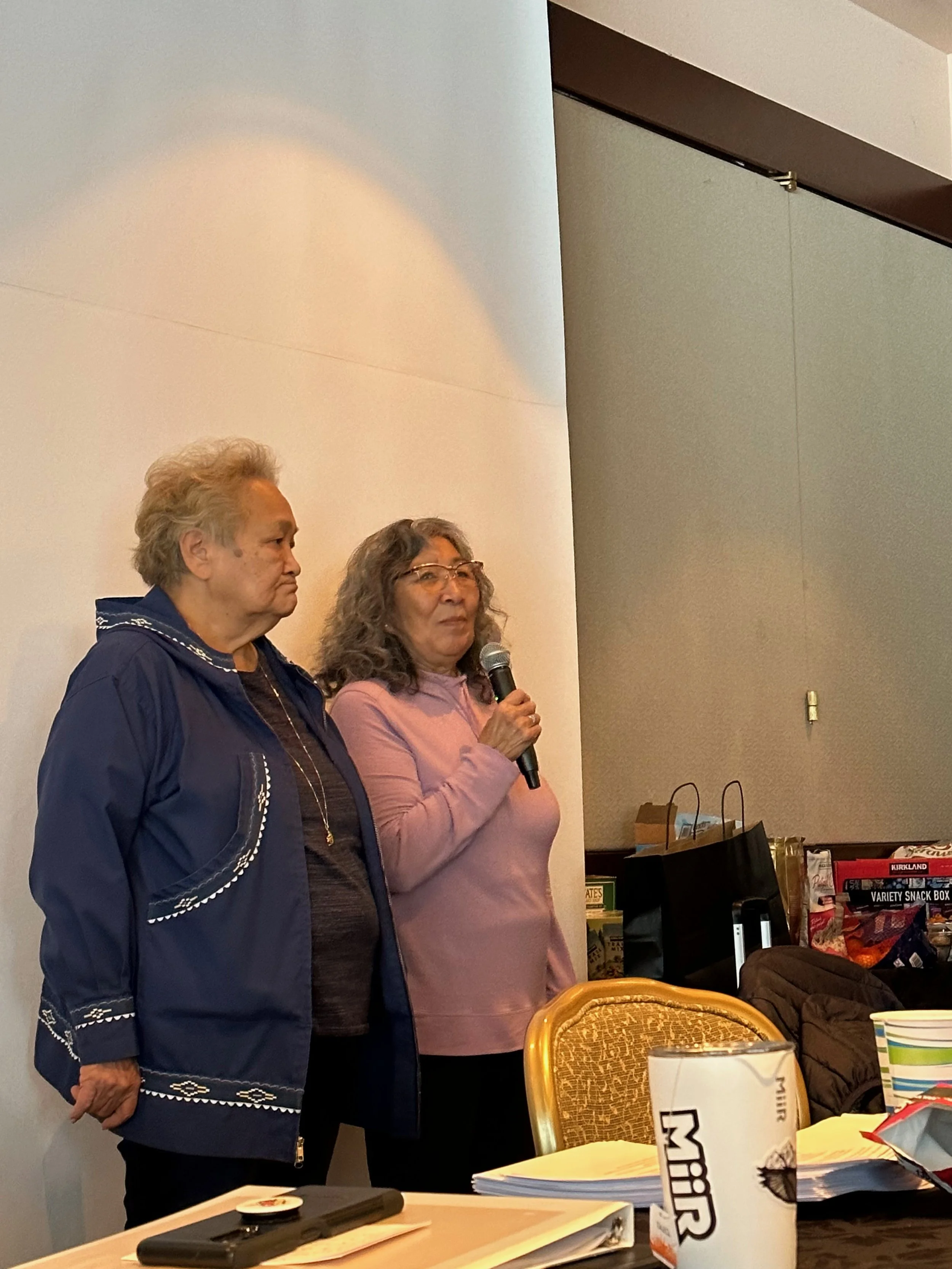This learning circle examines what research says about how people, communities, and institutions like schools can help after a suicide and reduce the risk of another. Participants talk about the process of healing from grief, and finish with an activity that will help them show caring to families or people who might be hurting.
References:
Beals, J., Manson, S.M., Whitesell, N.R., Spicer, P., Novins, D.K., & Mitchell, C.M. (2005) Prevalence of DSM-IV disorders and attendant help-seeking in 2 American Indian reservation populations. Archives of General Psychiatry, 62, 1, 99-08.
Beals, J., Novins, D.K., Whitesell, N.R., Spicer, P., Mitchell, C.M. & Manson, S.M. (2005). Prevalence of mental disorders and utilization of mental health services in two American Indian reservation populations: Mental health disparities in a national context. American Journal of Psychiatry, 162, 9, 1723-1732. http://search.ebscohost.com/login.aspx?direct=true&db=psyh&AN=2005-10664-020&site=ehost-live. doi: 10.1176/appi.ajp.162.9.1723.
Cerel, J., & Campbell, F. R. (2008). Suicide survivors seeking mental health services: A preliminary examination of the role of an active postvention model. Suicide and Life-Threatening Behavior, 38, 1, 30–34.
Cook, F.J., Langford, L. & Ruocco, K. (2017). Evidence- and practice-informed approach to implementing peer grief support after suicide systematically in the USA, Death Studies, 41, 10, 648-658.
Cox GR, Robinson J, Williamson M, Lockley A, Cheung YTD, Pirkis J. Suicide clusters in young people: Evidence for the effectiveness of postvention strategies. Crisis: The Journal of Crisis Intervention and Suicide Prevention. 2012;33(4):208.
Cox, G. R., Bailey, E., Jorm, A. F., Reavley, N. J., Templer, K., Parker, A., Rickwood, D., ... Robinson, J. (2016). Development of suicide postvention guidelines for secondary schools: a Delphi study. BMC Public Health, 16, 1.
Crepeau‐Hobson MF, Leech NL. The impact of exposure to peer suicidal Self‐Directed violence on youth suicidal behavior: A critical review of the literature. Suicide and Life-Threatening Behavior. 2014;44(1):58-77.
Currier, G. W., Brown, G. K., Brenner, L. A., Chesin, M., Knox, K. L., Ghahramanlou-Holloway, M., & Stanley, B. (2015). Rationale and study protocol for a two-part intervention: Safety planning and structured follow-up among veterans at risk for suicide and discharged from the emergency department. Contemporary Clinical Trials, 43, 179-184.
Currier, G.W., Brown, G.K., & Brenner, L.A. (2015). Rationale and study protocol for a two-part intervention: Safety planning and structured follow-up among veterans at risk for suicide and discharged from the emergency department. Contemporary Clinical Trials.
Feigelman, W., Jordan, J. R., McIntosh, J. L., & Feigelman, B. (2012). Devastating losses: How parents cope with the death of a child to suicide or drugs. New York, NY: Springer. Retrieved from: https://www-tandfonline-com.proxy.consortiumlibrary.org/doi/full/10.1080/07481187.2017.1335552?scroll=top&needAccess=true
Goodwin-Smith I, Hicks N, Hawke M, Alver G, Raftery P. Living beyond aboriginal suicide: Developing a culturally appropriate and accessible suicide postvention service for aboriginal communities in south australia. Advances in Mental Health. 2013;11(3):238-245.
Grant C, Ballard ED, Olson-Madden JH. An empowerment approach to family caregiver involvement in suicide prevention implications for practice. The Family Journal. 2015:1066480715572962.
Grant, C., Ballard, E.D., & Olson-Madden, J.H. (2015). An empowerment approach to family caregiver involvement in suicide prevention implications for practice. Family Journal, 23, 3, 295-304.
Kovac, S. H., & Range, L. M. (2000). Writing projects: Lessening undergraduates' unique suicidal bereavement. Suicide and Life-Threatening Behavior, 30, 1, 50-60.
Kral MJ, Idlout L, Minore JB, Dyck RJ, Kirmayer LJ. Unikkaartuit: Meanings and experiences of suicide among inuit in nunavut, canada. International Journal of Indigenous Health. 2014;10(1):55-67.
Kral, M.J. & Idlout, L. (2009). Community wellness and social action in the canadian arctic: Collective agency as subjective wellbeing. In: Kirmayer L.J., Valaskakis G.G., eds. Healing traditions: The mental health of aboriginal peoples in Canada. Vancouver, Canada: UBC; 315-334.
Linde K, Treml J, Steinig J, Nagl M, Kersting A (2017). Grief interventions for people bereaved by suicide: A systematic review. PLOS ONE 12(6): e0179496.
Luxton, D.D., June, J.D. & Comtois, K.A. (2013). Can postdischarge follow-up contacts prevent suicide and suicidal behavior? A review of the evidence. Crisis: The Journal of Crisis Intervention and Suicide Prevention, 34, 1, 32.
Luxton, D.D., June, J.D., & Comtois, K.A. (2013). Can postdischarge follow-up contacts prevent suicide and suicidal behavior? A review of the evidence. Crisis: The Journal of Crisis Intervention and Suicide Prevention, 34, 1, 32.
Mann, J.J., Apter, A., Bertolote, J., et al. (2005). Suicide prevention strategies. The Journal of the American Medical Association, 294, 16, 2064-2074.
McDaid, C., Trowman, R., Golder, S., Hawton, K., & Sowden, A. (2008). Interventions for people bereaved through suicide: Systematic review. British Journal of Psychiatry, 193, 6, 438-443.
Motto, J.A. & Bostrom, A.G. (2001). A randomized controlled trial of postcrisis suicide prevention. Psychiatric Services, 52, 828-833.
Motto, J.A. & Bostrom, A.G. (2001). A randomized controlled trial of postcrisis suicide prevention. Psychiatric Services, 52, 828-833.
Shulman, L. (2006). The skills of helping individuals, families, groups, and communities (5th ed.). Pacific Grove, CA: Brooks/Cole.
Stanley, B. & Brown, G.K. (2012). Safety planning intervention: A brief intervention to mitigate suicide risk. Cognitive and Behavioral Practice, 19, 2, 256-264.
Stuart, J. & Jose, P.E. (2004). The protective influence of family connectedness, ethnic identity, and ethnic engagement for New Zealand Ma̅ori adolescents. Developmental Psychology, 50, 6, 1817-1826.
Survivors of Suicide Loss Task Force. (2015). Responding to grief, trauma, & distress after a suicide: U.S. national guidelines. Washington, DC: National Action Alliance for Suicide Prevention, p. 34)
Tal Young, I., Iglewicz, A., Glorioso, D., Lanouette, N., Seay, K., Ilapakurti, M., & Zisook, S. (2012). Suicide bereavement and complicated grief. Dialogues in clinical neuroscience, 14, 2, 177-86.
Whitlock, J., Wyman, P.A., & Moore, S.R. (2014). Connectedness and suicide prevention in adolescents: Pathways and implications. Suicide and Life-Threatening Behavior, 44, 3, 246-272.
Wilson A, Marshall A. The support needs and experiences of suicidally bereaved family and friends. Death Stud. 2010;34(7):625-640.


